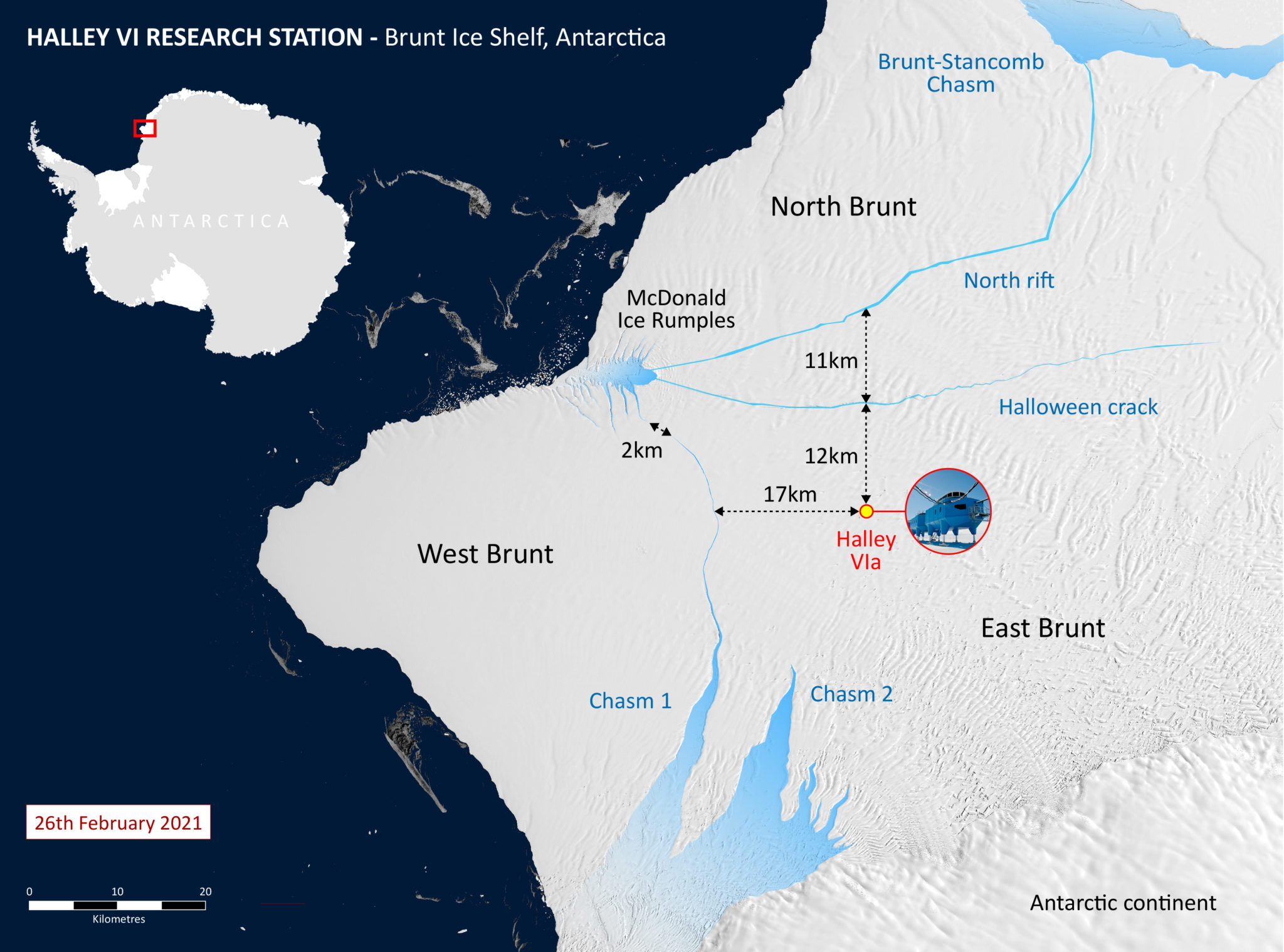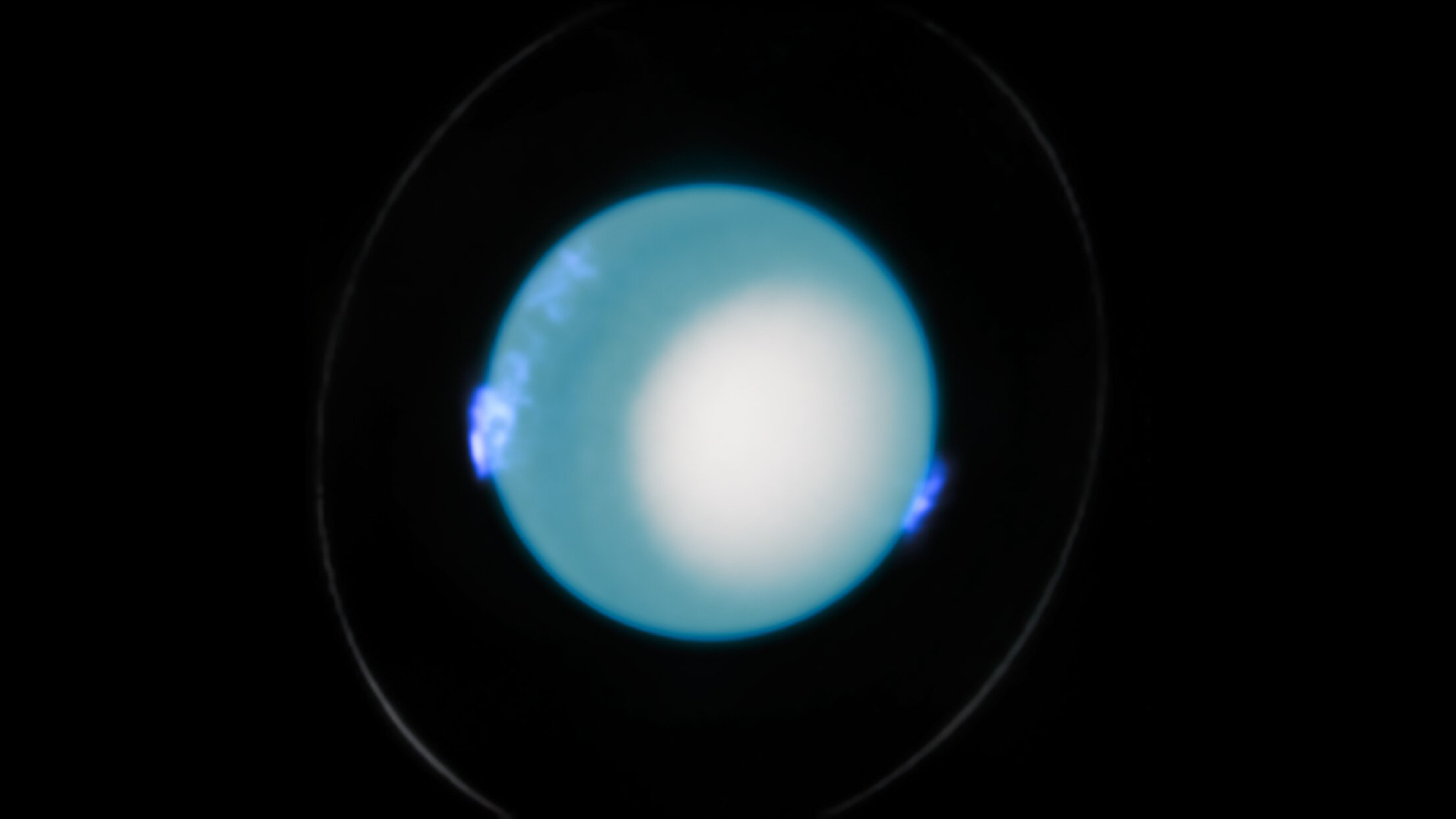Watch this giant iceberg break off from Antarctica
The iceberg broke off from Antarctica's Brunt Ice Shelf on Feb. 26.

New radar images captured from space reveal a giant iceberg breaking off in Antarctica.
The iceberg, called A-74, covers about 490 square miles (1,270 square kilometers), making it 1.5 times bigger than Greater Paris. It broke off from the northern region of Antarctica's Brunt Ice Shelf on Feb. 26, just a few months after a large crack formed in November 2020.
The new images of the iceberg's big break were captured by the European Space Agency's (ESA) Copernicus Sentinel-1 mission, an Earth-observing project made up of two orbiting satellites: Sentinel-1A and Sentinel-1B.
"Although the calving of the new berg was expected and forecasted some weeks ago, watching such remote events unfold is still captivating," ESA scientist Mark Drinkwater said in an ESA statement about the event and how incredible it is to watch it all happen from space.
Photos: Diving beneath Antarctica's Ross Ice Shelf

For years, glaciologists have monitored the cracks that have formed in the Brunt Ice Shelf, a large floating slab of ice 492 feet (150 meters) thick located on Antarctica's northern rim and the site of the British Antarctic Survey's (BAS) Halley Research Station.
These scientists have been expecting a large "calving event" for at least a decade, according to the BAS. Ice calving, or iceberg or glacier calving, occurs when large pieces of ice break off of a glacier. The team working at the BAS Halley Research Station say that the station is unlikely to be affected by the recent calving event, according to the same BAS statement.
Sign up for the Live Science daily newsletter now
Get the world’s most fascinating discoveries delivered straight to your inbox.
The Brunt Ice Shelf, which typically flows west at about 1.2 miles (2 kilometers) per year, routinely experiences calving events. According to the BAS in the same statement, there is "no evidence that climate change has played a significant role" in this specific event.
Photos: Behind the scenes of an Antarctic research base's relocation
In November 2020, a new chasm (or deep fissure) named the North Rift started quickly cutting across the ice shelf, moving about 16 feet (5 meters) per day, according to the same ESA statement. Finally, on Feb. 26, the crack spread apart, widening before the iceberg was completely free from the ice shelf.
"Over the following weeks and months, the iceberg could be entrained in the swift south-westerly flowing coastal current, run aground or cause further damage by bumping into the southern Brunt Ice Shelf. So we will be carefully monitoring the situation using data provided by the Copernicus Sentinel-1 mission," Drinkwater added.
Email Chelsea Gohd at cgohd@space.com or follow her on Twitter @chelsea_gohd. Follow us on Twitter @Spacedotcom and on Facebook.
Chelsea Gohd joined Space.com as an intern in the summer of 2018 and returned as a Staff Writer in 2019. After receiving a B.S. in Public Health, she worked as a science communicator at the American Museum of Natural History. Chelsea has written for publications including Scientific American, Discover Magazine Blog, Astronomy Magazine, Live Science, All That is Interesting, AMNH Microbe Mondays blog, The Daily Targum and Roaring Earth. When not writing, reading or following the latest space and science discoveries, Chelsea is writing music, singing, playing guitar and performing with her band Foxanne (@foxannemusic). You can follow her on Twitter @chelsea_gohd.











